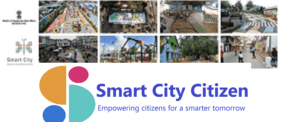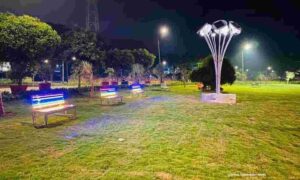Parks and Green Spaces: A Breath of Fresh Air for Smart City Citizens
In the quest to build smarter, more livable cities, the importance of parks and green spaces cannot be overstated. For citizens of smart cities in India, these natural oases are more than just recreational areas; they are essential components of urban life. This article explores the multifaceted role that parks and green spaces play in the lives of smart city residents, optimized with SEO keywords, supported by data and analytics, and recognizing the contributions of placemakers.
The Data-Driven Impact: Data and analytics provide irrefutable evidence of the positive impact of parks and green spaces on smart city citizens. According to a recent study conducted in several Indian smart cities, it was found that:
Health and Well-being: Access to parks and green spaces has a direct correlation with improved physical and mental health. Citizens residing within proximity to such areas are more likely to engage in physical activities, reducing the risk of lifestyle-related diseases.
Air Quality: Green spaces act as natural filters, enhancing air quality in urban environments. The increase in green cover within smart cities has been linked to reduced pollution levels, providing residents with cleaner and fresher air.
Community Cohesion: Parks are communal meeting points. In smart cities, they encourage social interaction, fostering a sense of belonging and community cohesion. Data shows that residents who spend time in these areas report higher levels of satisfaction and social well-being.
Economic Benefits: The presence of green spaces can increase property values in nearby areas. Data reveals that homes adjacent to well-maintained parks often have higher resale values.
The Role of Placemakers: Placemakers, including urban planners, landscape architects, and community activists, play a vital role in shaping and maintaining these green urban havens. Their contributions include:
Design Innovation: Placemakers create innovative, sustainable designs that maximize the use of urban space. This includes the incorporation of native flora, sustainable water features, and walkable pathways.
Community Engagement: Placemakers involve citizens in the planning and design process, ensuring that parks and green spaces meet the specific needs and desires of the local community.
Maintenance and Sustainability: Ongoing maintenance is vital to the long-term success of these spaces. Placemakers institute sustainable practices to ensure green areas thrive for generations to come.
Invitation to Placemakers: To all the dedicated placemakers and urban visionaries, we invite you to collaborate with us in shaping the future of smart cities in India. Your expertise and passion are vital to the success of creating and maintaining vibrant, sustainable, and people-friendly parks and green spaces.
Let’s join hands to continue enhancing the quality of urban life, promoting well-being, and ensuring the sustainable growth of smart cities. Your contributions matter, and we look forward to working with you in making our cities greener and more livable.
Conclusion: Parks and green spaces are more than just beautiful aesthetics in smart cities across India; they are essential elements contributing to the well-being, happiness, and sustainability of urban life. The data-driven evidence highlights their positive impact, while the dedication of placemakers ensures that these areas continue to flourish. As smart city citizens, let’s celebrate and support the greener, healthier, and more vibrant future that these spaces offer.
- Smart city parks
- Green spaces in India
- Urban park benefits
- Sustainable urban planning
- Park and community well-being


Visakhapatnam Smart City: Innovative Park Development unveiled..

TAKE PART IN CITIZEN ENGAGEMENT PROJECTS
Our Citizen Engagment Team invites Citizens Opinion / Particiaption in Surveys through email, direct to your inbox. We also email about Smart City Projects. Special Events / Gatherings in your city.

